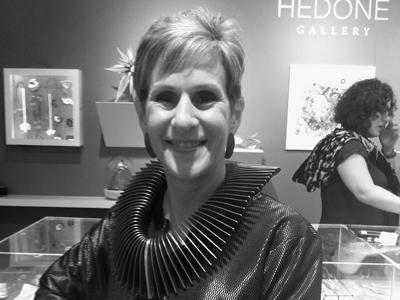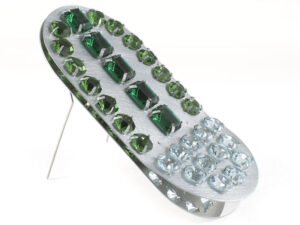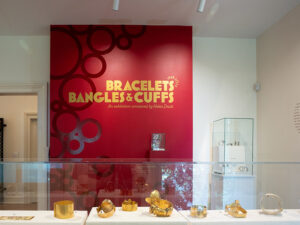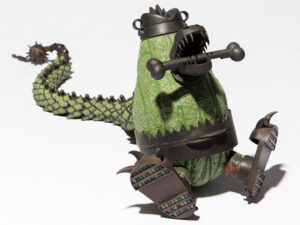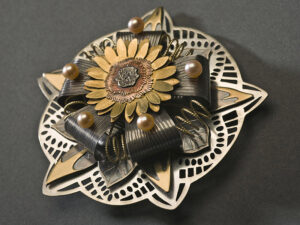
Bonnie Levine: Tell us about your background and how you found your way to being a jewelry maker.
Patrycja Zwierzynska: I went to art school without the specific intention of becoming a jeweler. Art was always something I was involved in, and I wanted to pursue my passion for it. In my second year at school, I took an introductory jewelry course and got hooked on working with metal and the finesse it required. I became obsessive about polishing and fitting pieces together perfectly. Working with the material really spoke to me, and pretty soon, the jewelry projects I was working on were all I was thinking about.
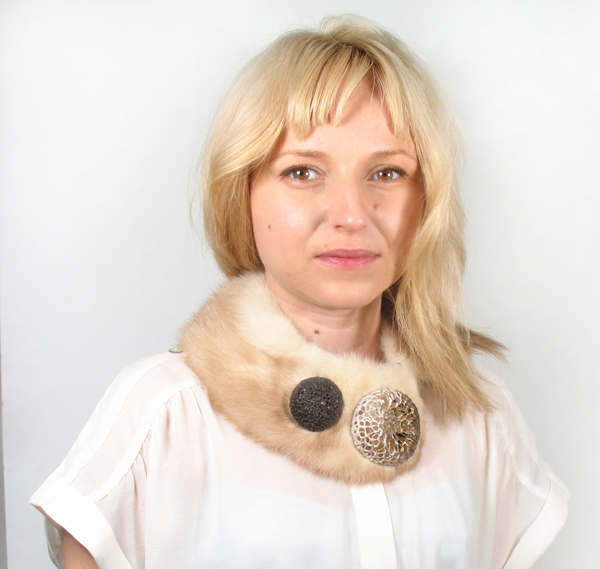
Bonnie Levine: Tell us about your background and how you found your way to being a jewelry maker.
Patrycja Zwierzynska: I went to art school without the specific intention of becoming a jeweler. Art was always something I was involved in, and I wanted to pursue my passion for it. In my second year at school, I took an introductory jewelry course and got hooked on working with metal and the finesse it required. I became obsessive about polishing and fitting pieces together perfectly. Working with the material really spoke to me, and pretty soon, the jewelry projects I was working on were all I was thinking about.
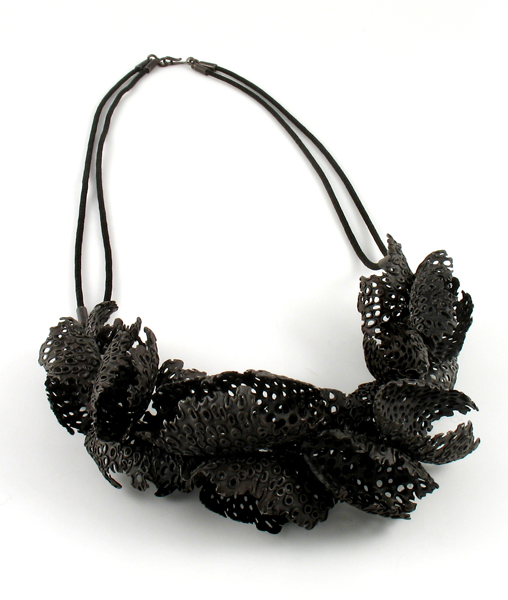
Patrycja Zwierzynska: It is a process of discovery for me in the sense that most often, when I set out to make something new, I don’t know exactly how the finished piece will look. I rely heavily on process to lead me in unexpected directions while designing and making. The process usually involves spending a lot of time experimenting and manipulating materials. For example, if I’m working with casting and making wax models, I ask myself how I could manipulate the wax so that its particular properties are utilized. Unlike metal, wax is soft and pliable, so I try to go with those properties rather than go against them.
I’m often surprised and delighted by where this approach takes the work. There are often moments when I manipulate something in a particular way, and the effect speaks very clearly to me. From there, I try to repeat the effect intentionally (which sometimes proves to be impossible) and refine further.
Your work is very organic and abstract and reminds me of nature—the forest and the sea. How do you interact with nature, and how does this inspire your designs?
Patrycja Zwierzynska: There is an essence in natural forms that I find really captivating. Whether it’s looking at these in person or at images that others or I have taken, the natural world continues to be a big inspiration and driving force for my work.
It is the essence of nature, rather than the physical piece, that I’m most concerned with. I’m not so much interested in appropriating and re-creating what already exists in a different form as I am in capturing an essence within a piece, of something that resonates with me.

I know that exploring materials and process are central to your work. Tell us about your creative process and how materials and process influence each other. What materials are you drawn to and why?
Patrycja Zwierzynska: I love working with metal and the craftsmanship that it demands, but more than anything, I think I like inventing ways to work with it that explore my particular interests.
I like the challenge of metal being a material that “pushes back” and has limits. I like examining and working with it in a way that showcases what metal is really good at: structure, strength, rigidity. I often get comments about the fragile and delicate appearance of my work—it’s the metal that allows me to make lacelike, skeletal hollow forms precisely because it will be able to hold those forms and withstand being worn.
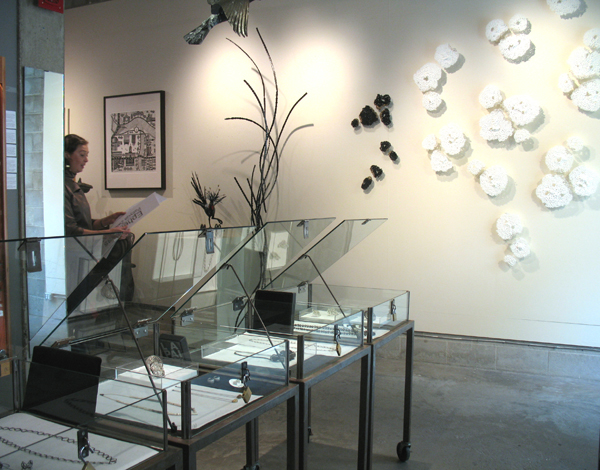
Patrycja Zwierzynska: The term “ephemeras” could be used to describe collections of unfamiliar objects that appear to be undergoing some process of disintegration or transformation. They could be relics of something living, or perhaps they are coming into life. Not knowing which part of the cycle they are in leaves one searching for a term to classify them. The pieces explore my interest in pattern, texture, and form, as well as fragility, and the essence contained within these. The abstractly skeletal structures within the work and the choice of delicate materials allude to things in flux, processes of change, and the beauty of a constant impermanence.
What was your concept for the show? Did you develop a new body of work for it?
Patrycja Zwierzynska: The creation of this work involves building things that get destroyed along the way, for example the wax models that get cast into metal. There is an ephemerality to the process, as well as to the aesthetic of the work.

Patrycja Zwierzynska: The studio came together to fill a need, mainly, for a workspace. A group of us got together and through our strength in numbers began imagining what else might be possible. When discussing the setup of the studio, we talked a lot about the importance of community and creating a hub for contemporary craft-based activities. The members are all involved in different aspects of craft and art, so bringing those viewpoints together became important as well.
The space we had available had room for studios as well as a gallery and events space. We took advantage of both to realize the mission of providing support to fellow artists, in the form of an affordable gallery space, as well as to the public, in making contemporary craft-based art accessible.
Is it fulfilling the mission and vision the founders envisioned? What niche does it fill in the art-jewelry world of Canada?
Patrycja Zwierzynska: The studio and gallery currently houses 12 members working in various media and has put on numerous exhibitions, open houses, and craft-based events throughout the four years it has been operational. Cooperatively running the space has been an amazing experience both in the knowledge it’s brought to all of us as well as in the experiences it has made possible.
There are currently three jewelers working out of the studio, and all three of us have very different approaches to making and running our practices. The benefit of this is that we have access to each other and to the different knowledge and experience each one of us has. It’s a really lovely way of working.
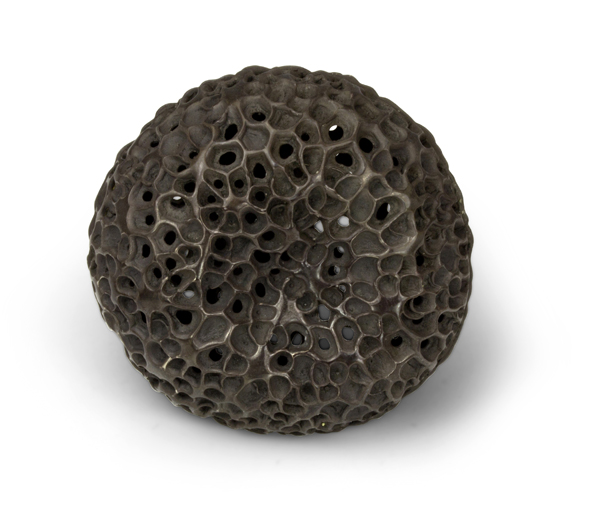
What have you seen or read recently that made an impact on you that our readers should know about?
Patrycja Zwierzynska: I’ve been slowly getting through a copy of The Rise of the Creative Class, by Richard Florida. It’s an incredibly insightful look at working creatively in contemporary times, and reading it has really deepened my understanding of what I do. The best part about it is that it’s not only about artists, but rather the creative approach to any profession.
My favorite visual reference is a book of Ernst Haeckel’s illustrations of ocean microorganisms called Art Forms from the Ocean. It’s mind-blowing how complicated and beautiful these are.
Thank you.
